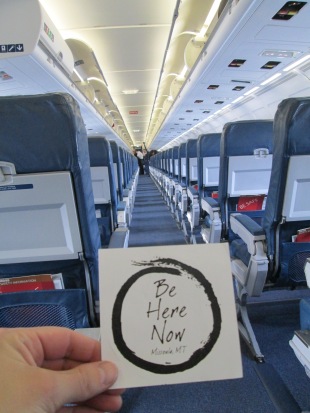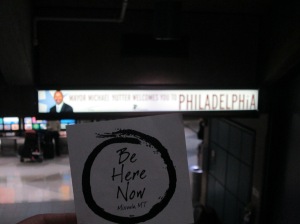Until recently I have not understood or had a clear sense about what it meant to cultivate equanimity. In looking up the definition online I came across the all mighty wikipedia’s two cents: Equanimity is a state of psychological stability and composure which is undisturbed by experience of or exposure to emotions, pain or other phenomena that may cause others to lose the balance of their mind. The virtue and value of equanimity is extolled and advocated by a number of major religions and ancient philosophies.
It turns out I should’ve looked up the darn word years ago because after reading the definition I can understand what it means right away. Big words oftentimes confuse me. So now here I am traveling on the path of mindfulness and zen based practice of which I’ve been on for some 10 years or so and this elusive, or rather seemingly elusive, teaching grows alongside my steps in, also seemingly, sudden thickets.
It seems to me that with consistent, diligent practice certain teachings start coming about effortlessly. Of course much effort has actually gone on along the path but much like when you work hard cultivating good soil on a patch of earth for a time nature then is supported in taking care of the rest.
In basic terms equanimity is the practice of letting go. It is being able to rest in the moment just as it is – to lay our worries and anxiety down. Experience has shown me that when I wait for life to come together or get better or for happiness to arise in the future I continue to travel down an illusory path of non-harmony. The practice of thinking that happiness is possible only when certain conditions arise and line up in a specific way is not only detrimental to my well being it is on every level imaginable simply not true.
Happiness rooted in circumstances outside of myself, such as a certain job, certain relationship, more money, a better car, more stuff etc., is a fast burning fuel. Once the high of obtaining such things wears off I am left once again craving the next best thing to happen. Equanimity teaches us that it is possible to be content and at ease in the here and now despite the happenings going on around us. When a storm sweeps in through the forest if we were to look at the tops of the trees we would see the thin branches and leaves blowing about tumultuously but when we look down to its base we see it is rooted very solidly in the earth. With practice we can become more and more like the trunk of a large tree, unwavering and firmly grounded in equanimity.
I used to confuse equanimity with a lack of care or emotion. But I see now more clearly that it is a matter of developing a different relationship to life and its unfolding. With the practice of cultivating equanimity our energy is given the opportunity to transform from creating drama to creating dharma in any situation and with every person we encounter.




















